Marine and industrial engines are used to drive factories, construction equipment, boats, and fishing vessels. It is therefore important to understand how these engines can be repaired because they are essential in day-to-day operation as well as the economy, and their life and efficiency need to be maintained. Here is the important information regarding the different types of engines, types of problems that may occur, techniques for engine repair, and how to prevent future problems with regard to engines. This article is a guide to understanding the concept of Repair of marine and industrial engines.
Understanding Marine and Industrial Engines
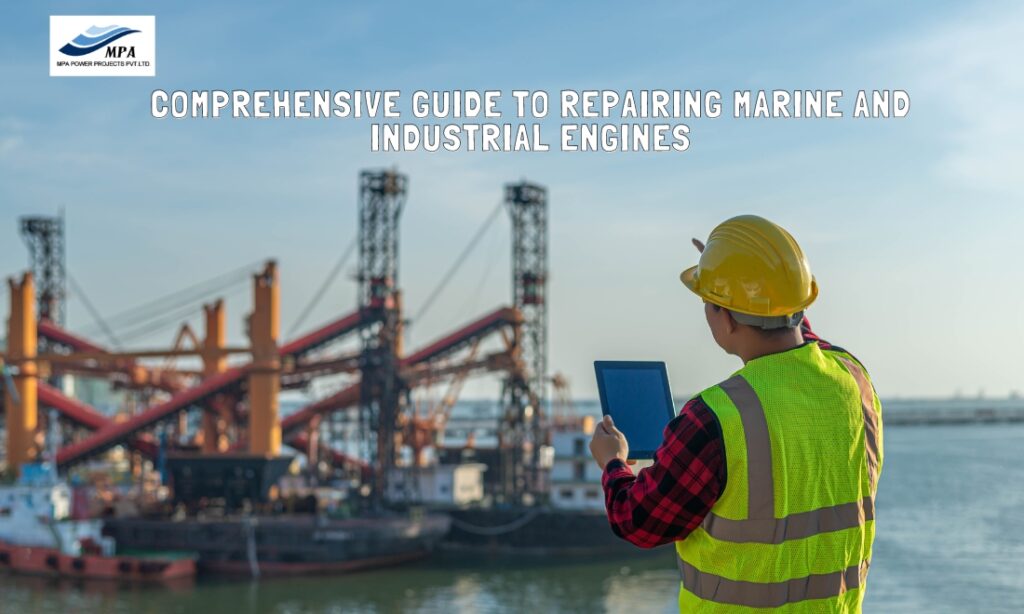
Types of Engines:
Industrial and marine engines run differently. Diesel-two- or four-stroke engines run effectively and reliably in marine applications. Industrial runs the gamut from the small, one-cylinder gasoline generator all the way up to the great big diesel-burning monsters that are the power plant behind many heavy machines.
Key Components:
In fact, to be able to enable good maintenance, it is necessary to know the basic elements of such engines. Some critical parts include the crankshaft, the pistons, the cylinder heads, the fuel injectors, and the cooling systems. All these have different roles to play; thus, in case one or more fail, then some operations may be affected.
Common Problems:
Problems such as fuel system, oil leak, and overheating concerns are common to industrial and marine engines. A problem must first be realized before there could be an effective resolution and maintenance.
Common Causes of Engine Failure
Wear and tear:
The decay process leads to wear and tear of the engine, which, in turn, affects the piston rings and bearings. Such decay may lessen the efficiency of an engine or even cause complete failure of an engine. Some of these components might not perform their original role, and due to rubbing or slip and movement between their mating surfaces, there will be wearing of material, friction, and slippage, leading to loss of energy and mechanical failure. These problems need to be sorted out early so that they do not progress to a more complicated level that will require more money to fix.
Contamination:
Through water, rust, and grime, it becomes worse as the systems of the engine are greatly contaminated. These contaminations may seep into the gasoline and oil stream lines and result in corrosion and difficulties in the engines. While the engine receives dirty fuel, it may lead to clogging of injectors, while dirty oil leads to component wear and tear. Making sure that fuel is clean and that the filters are changed often, as well as having proper storage conditions, helps to keep contamination at a minimum and engine power at its best.
Overheating:
This might result in overheating problems that could lead to engine wear and tear of most of the engine parts. They include low coolant levels, restricted coolant flow passage, and damaged thermostats as the leading causes of engine overheating. Overheating of the engine may lead to damage to gaskets, distortion of the cylinder head, and overall failure of the engine. It may be prevented overheating and damage to the engine since the cooling system needs to be maintained frequently. This comprises the checking of the coolant levels and the flow.
Poor Maintenance:
Failure to practice routine maintenance of the engine engines is known to trigger engine failure greatly. Lack of oil changes, filter replacements, and other required services are likely to cause contaminants of the engine or wear and even engine failure. Such problems must be prevented, and this calls for planning for the specific maintenance needs of the engine. Routine servicing could possibly increase the durability of an engine and decrease the possibility of unexpected failures.
Steps for Effective Engine Repair
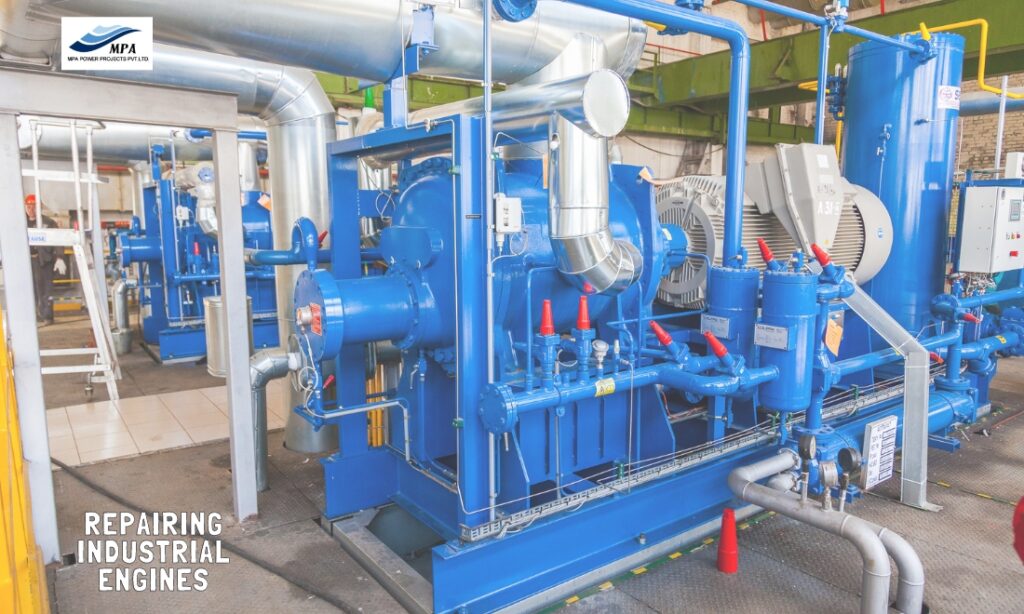
Initial Inspection and Diagnosis:
The process of On site repair of Marine Auxiliary Engine, first of all, requires an overall check-up in order to find the problem beneath. During this introductory step, diagnostic equipment and a visual examination are considered in order to look at the important components. The technicians can identify engine wear, corrosion, and malfunction through careful observation. Such a thorough diagnosis helps one find out the actual cause of the problem, hence making it possible to allow for the perfect and appropriate repair method.
Disassembly and Cleaning
After diagnosis, there is a need to disassemble the engine in order to get to the inner parts. Every part has to be delicately disassembled in order not to miss anything. Afterwards, the parts have to be cleaned from the dirt and impurities. Cleaning purges the items of impurities that may result in problems related to engine functionality, making items prepared to be repaired or replaced. This stage prepares the engine for precise work.
Repair and replacement of components:
Repair or replace the worn components after having cleaned and disassembled the engine. Replacement of gaskets, bearings, piston rings, and other serious components can be done. You have to include suitable replacement parts that come under high quality to keep the engine working excellently. Taking good care of the engine with the best materials increases its life and performance.
Reassembly and Testing
Normally, the engine is dismantled and taken to workshops for Marine Engine Repair Service. After repairs, the engine is carefully rebuilt and tested. At this stage, minute details have to be attended to in order to set all components right. Those parts of the engine that are reassembled are tested for smooth functioning and to check that their operations are within norms. The engine should at this stage test back to normal to ensure the repair was effective, hence it is fit again for use.
Specialized Repair Techniques
In-Situ Repairs:
On-site works are very appropriate for large engines, especially industrial ones, and ships that cannot afford to be taken to a mechanic shop. Employing crank shaft grinding on site, technicians may repair problems without having to delete the engine parts. It can be said that it does not need much disassembly and transportation, thus minimizing time off. If problems are solved on site, it is cheaper and faster to do so, so also important equipment should run.
Metal Stitching:
Metal stitching is ideal since the technique used in repairing engine blocks and other metal components fractures. For strengthening the structure of the lost area, small metal screws are strategically placed over the cracks and tightened firmly. Metal stitching does not require heat and therefore is less dangerous to delicate or heat-sensitive products than welding. Proper repair that avails an exact solution that continues to keep the strength and performance of the motor and guarantees reliability all the time is definitely long-term.
Line Boring and Cylinder Honing:
Two particular kinds of drilling are needed in efficient and precise engines: line boring and cylinder honing. In line drilling, the cylinder bore of the engine is made to be parallel to the crankshaft and other related parts. Order, clarity, and sharpness are needed to sustain efficient workings as well as to minimize wear and tear. But cylinder honing refines the roughness of the cylinder walls and increases the ability to retain oil and the seal formed between piston rings and cylinder. These procedures have to be done simultaneously for there to be no problems as well as for the engine to perform well.
Preventive Maintenance Tips
Regular Inspections:
Some parts of an engine may be checked and even repaired frequently to ensure that they do not pose a major problem in terms of cost. It is toward this end that an inspection regimen may be beneficial for a vehicle to sustain its performance.
Lubrication Management:
The condition of the engine may also be improved since low friction and wear may be prevented by adequate lubrication. Many of the problems associated with lubrication could be avoided if car owners were to ensure that they change their oil regularly and check the level of the oil occasionally.
Cooling System Maintenance:
The cooling system of the automobile has to be well managed to avoid engine overheating. Some of the key things that require a check include the coolant levels, the condition of the rubber hoses that convey the coolant, and steady checking on debris that could be accumulated in the radiator to ensure that the car maintains a stable operating temperature.
Scheduled Overhauls:
This is particularly the case if routine overhauls are carried out on the engines so as to ensure that they are properly maintained. During the maintenance, all the parts are closely checked, and because of this, all the worn-out parts are changed.
Choosing the Right Repair Service Provider
Experience and expertise:
Hiring a repairman is a sensitive affair, especially when you are dealing with electrical connections, and how qualified the person is should be a key factor to consider. Look for people who are professionals who have worked on industrial or marine engines before; they will find such problem points.
Use of Advanced Technology:
On average, it was discovered that service providers who use diagnostic tools and who utilize advanced technologies in their repairs do better jobs. These technologies assist the specialists in identifying problems and solving them.
Customer Support:
Communication with customers and providing good customer service should also be taken into consideration. A good service provider should be capable of answering some questions, providing some updates, or explaining to you how a given item would be fixed.
Conclusion
It is, however, important to appreciate that the maintenance of marine and industrial engines is not a do-it-yourself activity that can be carried out haphazardly, especially given the fact that the engines involved are complex and delicate in the sense that they are required to be assembled with a significant degree of precision. It is true also that knowing about typical engine problems and their failure causes as well as following a step-by-step plan of Repair of marine and industrial engines can help engine lovers and professionals enhance their skills in engine maintenance. It enhances the durability of the engine and also its performance in as much as regular maintenance is concerned.




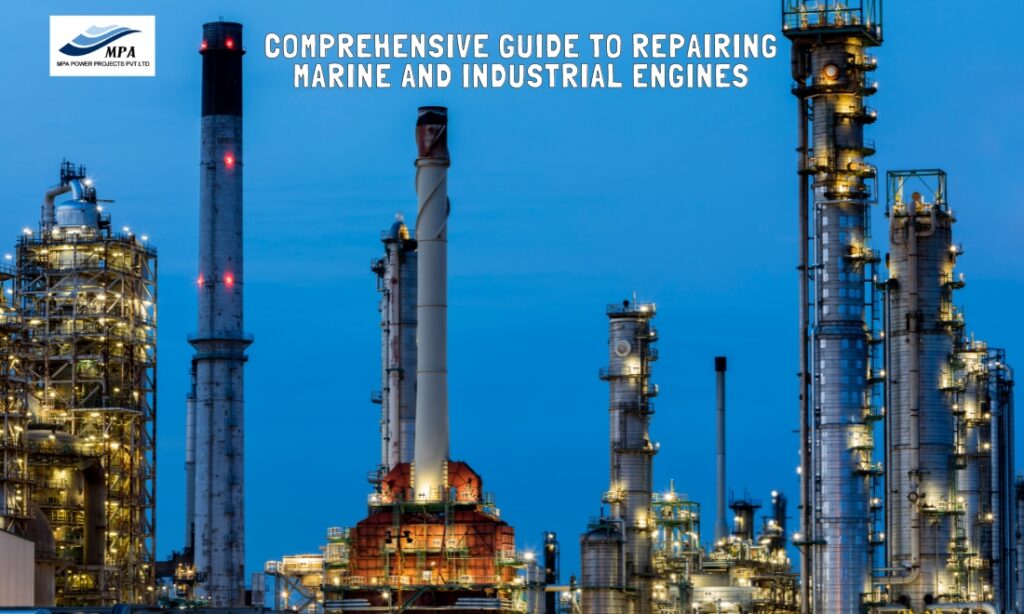



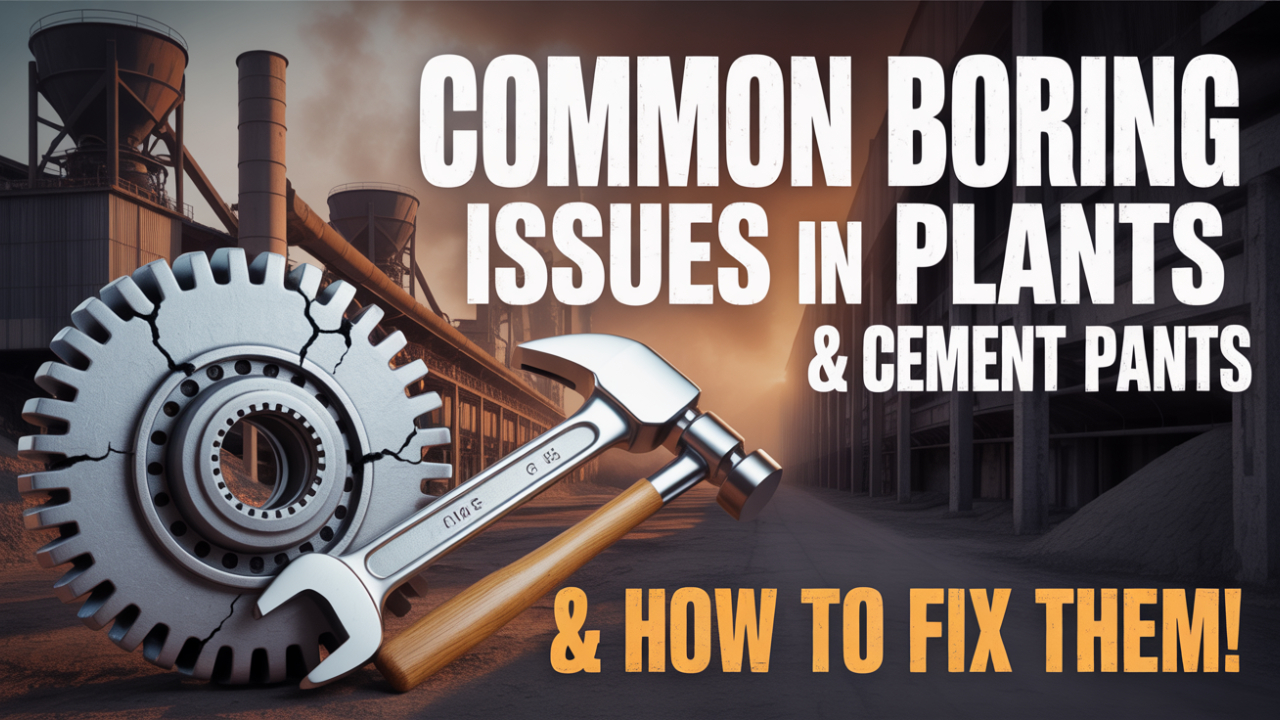

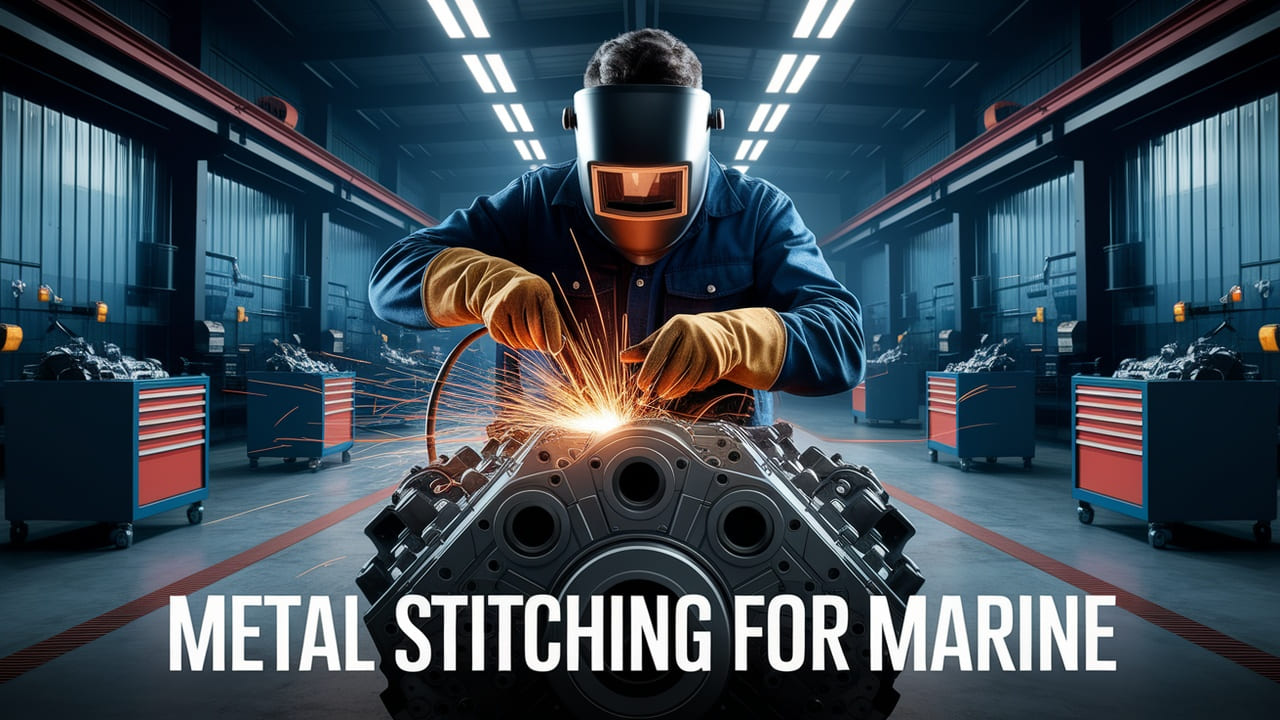
No Comments